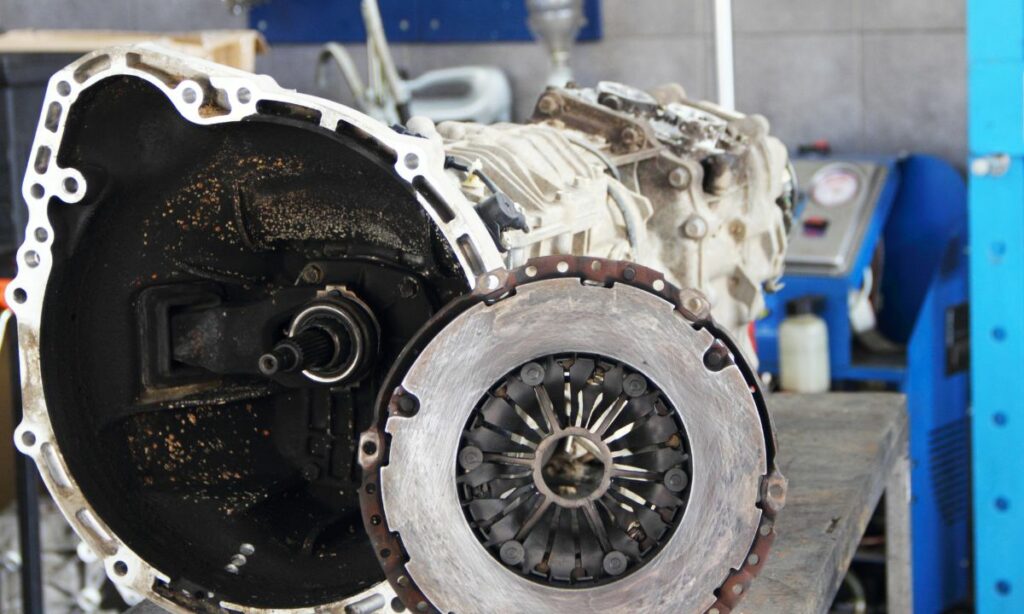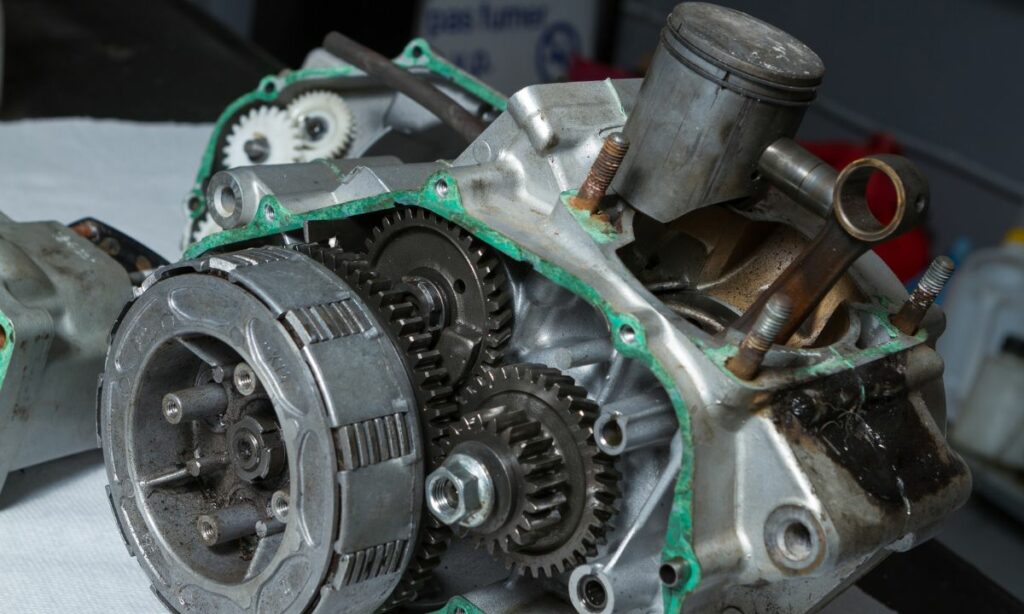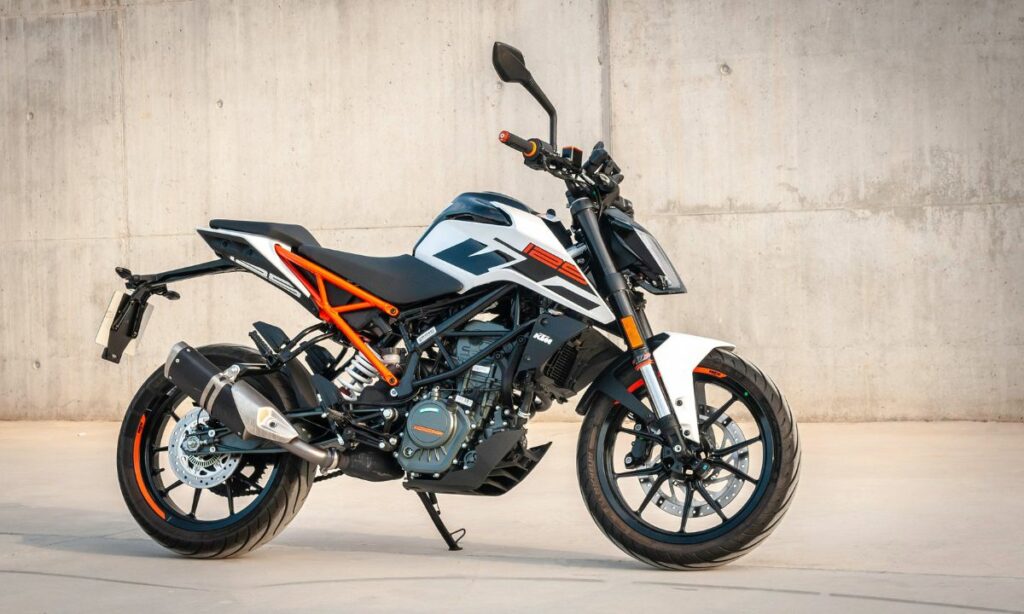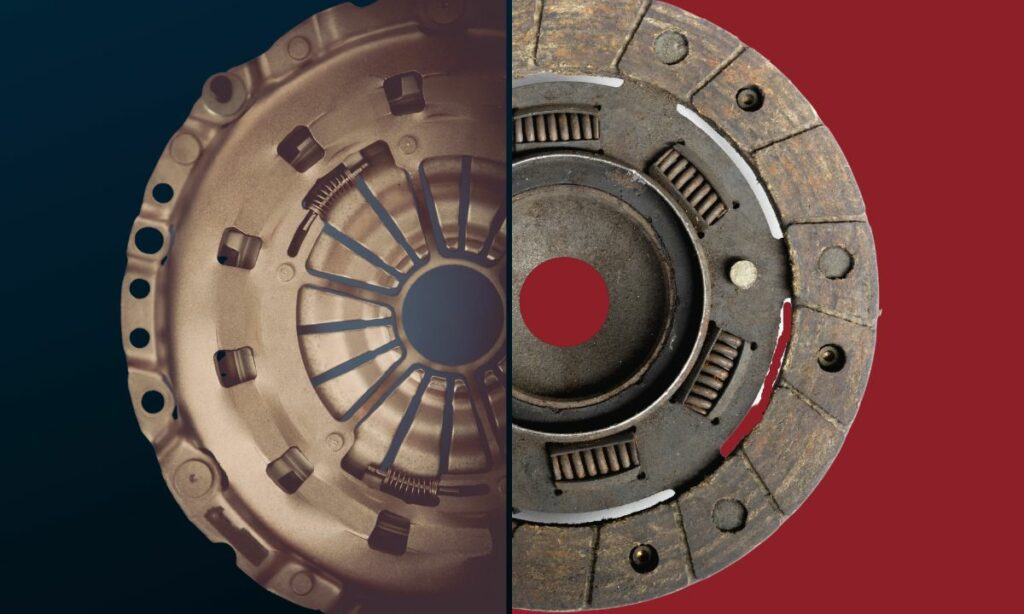The clutch is the mechanical linkage between the crankshaft and the gearbox.
Put simply, the clutch transmits power from the engine to the gear transmission.
And when disengaged, the clutch stops the power transmission to the gearbox.
There are 2 types of clutch used on motorcycles:
- Dry clutch
- Wet clutch
What’s the difference?
The dry clutch does not come in contact with the engine oil. Whereas the wet clutch is immersed in the engine oil. Hence the name – ‘wet’ clutch.
Wet clutches are the popular type since they can withstand lots of heat and wear. They also have longer lifespans. And a lot less noisy.
Dry clutches do not face fluid drag. Hence they have a slightly higher power transmission. They are also easy to work with since there is no oil involved.
That’s the summarised version.
For an in-depth view, let’s dig right in.
Dry Clutch
Decades ago, dry clutches were a common thing on almost all motorcycles.
The dry clutch in a motorcycle is housed outside of the crankcase. The clutch has no contact with the engine oil.

This is the main distinction.
Dry clutches are not immersed in engine oil.
They are housed separately.
The transmission through the clutch plates is much more efficient. There is no fluid drag. And hence, higher power transmission from the engine to the wheels.

Engine oil is better off as well. The oil gets contaminated less since there is no contact with the clutch plates. Only the crankcase components to lubricate.
But dry clutches have downsides too.
Without the oil, the friction between the clutch plates is too high.
As a result:
They produce loud noise as the motorcycle speeds up.
The clutch is prone to overheating. And the plates can get burnt easily.

The clutch plates have a shorter lifespan. They don’t last long.
All these problems because there is no engine oil to lubricate and cool the clutch plates.
On the brighter side, the dry clutch is easy to work on. Since there is no oil involved.
But clearly that isn’t enough.
The loud noise, overheating, and short lifespan – have made the dry clutches a thing of the past in the motorcycle world.

There are a few motorcycle models that still use dry clutches.
Racing motorcycles are a good example. Since dry clutch has higher power transmission, racing motorcycles still use them.
Apart from that, dry clutches are difficult to find on bikes.
Pros
- Higher power transmission
- Easy to work on since there is no oil
Cons
- Loud noise
- Clutch plates wear out and overheat fast
- Short lifespan
Used in
Dry clutches are mostly used in racing motorcycles and a few sport bikes.
You can also see them on old motorcycle models.

A few motorcycle manufacturers specializing in sports bikes and racing bikes also use dry clutches on their standard and street bikes as well. Ducati and Moto Guzzi are the notable names.
But these usage of dry clutches on standard and street bikes are more of an exception than the norm.
Wet Clutch
Wet clutches are immersed in engine oil. Hence the name – ‘wet’ clutch.
The clutch is housed within the crankcase.

The engine oil lubricates and cools down the clutch.
As a result:
Wet clutches can withstand lots of friction and heat.
This is especially useful when driving on high-traffic roads. You need to constantly use the clutch on and off.
In addition, wet clutches last long. They have a long lifespan. All thanks to the engine oil.

Another advantage of wet clutches is they don’t make lots of noise. They are quieter.
Wet clutches are also low in weight when compared to dry clutches. It’s not a big factor. Still, a small help in reducing the bike weight.

However, wet clutches have their downsides too.
Since wet clutches are bathed in engine oil, the oil gets dirty fast.
Even though the oil filter does its best to keep the engine oil clean, the oil still gets contaminated.
Another downside is wet clutches face fluid drag from the oil. Which leads to slightly lower power transmission when compared to the dry clutches.

Also, wet clutches are messy to work with.
But overall, the pros far outweigh the cons.
Wet clutches are the popular clutch type on motorcycles today.
Almost all modern motorcycles have wet clutches in them.
Pros
- Can withstand lots of friction and heat
- Long lifespan
- No noise
Cons
- Slightly lower power transmission
- Messy to work with
Used in
Wet clutches are used in almost all the motorcycles on the road today.
For any street motorcycle you see, the default clutch type used is the wet clutch.

Any dry clutch motorcycle you see would either be an exception or the motorcycle model is old.
Difference between a dry clutch and a wet clutch
Here are the major differences between a dry clutch and a wet clutch:
| Parameter | Dry clutch | Wet clutch |
|---|---|---|
| Immersed in engine oil | No | Yes |
| Noise level | High | Close to zero |
| Overheating | Frequently | Rarely |
| Lifespan | Short | Long |
| Fluid drag | No | Yes |
| Power transmission | High | Slightly low |
| Ease of working/repair | Easy | Difficult and messy |
| Use in | Racing bikes and old motorcycles | Almost all modern motorcycles |
Which clutch type is better?
Wet clutches are the better clutch type for almost all motorcycles on the road.
They have a better lifespan, low noise, and can take heat and wear and tear.

The only time where dry clutches are better is on racing tracks.
Their slightly better power transmission and easier-to-replace feature make a difference for racing bikes.
FAQs
The motorcycle clutch is used to engage and disengage the power transmission to the gearbox. When disengaged, the gear doesn’t receive power and the motorcycle goes to a neutral gear state.
Ducati does use wet clutches in some of its current models. But for its sports bikes and racing bikes, Ducati uses dry clutches due to their higher power transmission.
A dry clutch does result in higher horsepower than a wet clutch. This is because the dry clutch is not drenched in oil and hence does not face any fluid drag – unlike wet clutches. The fluid drag increases resistance and lowers the power output.
Before you go…
Here are a few more related posts for you:
